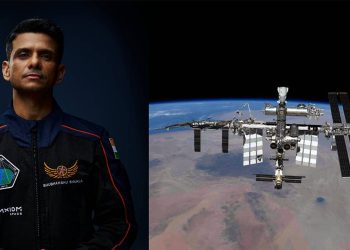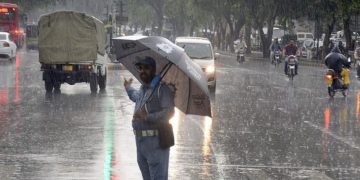CHINA: The lunar rock samples collected in more than 40 years period in China revealed the presence of lava on Moon 2 billion years ago.
During the study of China’s Chang’e-5 mission, it reveals that with the chemical analysis of volcanic rocks formed 2 billion years ago is around when the first multicellular developed on earth, it shows that moon remained volcanically active for longer than its size.
Although, the moon was formed roughly 4.5 billion years ago Apollo and Soviet mission’s lunar rocks show that the volcanism on the moon was common place for billion years. Given its size scientist assume that moon started cooling off around 3 billion years ago which makes it eventually inactive neighbor it is today.
However, the moon’s smoother spots seemed to suggest that volcanism had persisted past the moon’s early history. A planetary scientist at Rutgers University in Piscataway Juliane Gross says, “Young volcanism on a small body like the moon is challenging to explain, because usually small bodies cool fast”. Scientists suggest that radioactive material in the moon’s mantle just below the layers of visible crust of moon explain younger flows on the moon.
To test this theory Chang’e-5 lander collected pieces of Basalt, a type of rock that forms from the volcanic activity taken from the unexplored parts of the Moon which are thought to be 3 billion years older. The chemical analysis of these rocks did not yield the concentration of radioactive elements one would expect if radioactive decay were to explain the volcanism.
Meanwhile, these findings are compelling scientist to consider that what other sources would have contributed to maintain volcanic activity on the moon. One of the study coauthor Alexander Nemchin planetary scientist at the Beijing SHRIMP Center and Curtin University in Bentley says, “The moon was a lot closer 2 billion years ago,” as the moon moved away from earth slowly and steadily the these forces would have become less and less powerful until they dried out the volcano.
Another coauthor of the study says that the impact from comet and asteroids would also have played their part in maintaining lava at Moon’s surface but at this point any guess is a good guess. According to her this is a good step to know our neighbors habitat better.



































